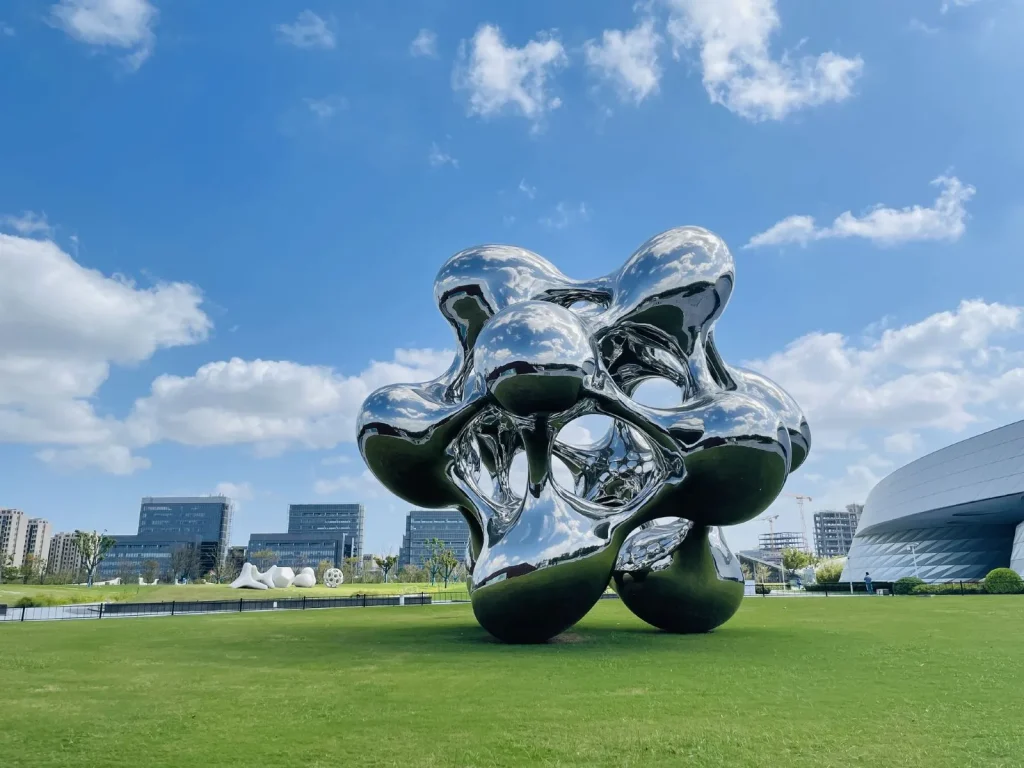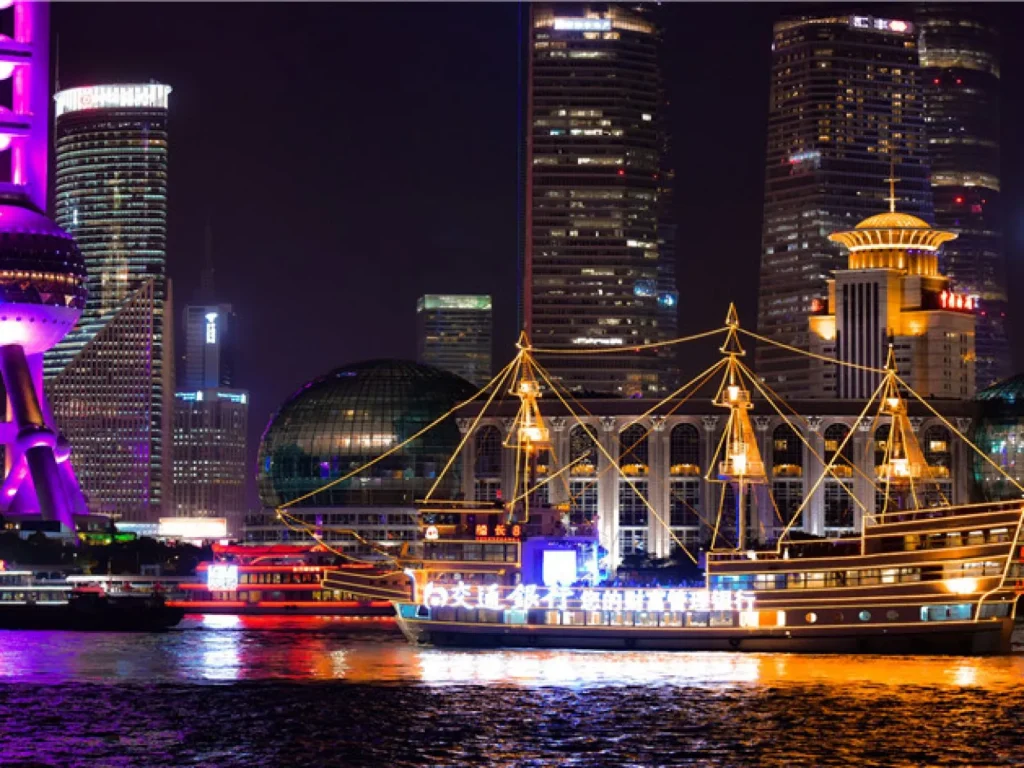Discover the Wonders of the Universe at This Architectural Marvel
The Shanghai Astronomy Museum is more than just a museum—it’s a gateway to the cosmos. As the largest planetarium-style museum in the world by floor area, it offers visitors an immersive journey through space and time. Located in the Lingang area of Shanghai’s Pudong New Area, this modern architectural masterpiece blends science, design, and education into one unforgettable experience.
Whether you’re a space enthusiast, a curious traveler, or planning a family outing, understanding the practical details—such as opening hours, ticket options, and transportation routes—is essential. This guide provides everything you need to know before visiting. From how to buy tickets online to the best ways to reach the museum using public transit, we’ve got you covered.
By the end of this article, you’ll be fully prepared to explore the Shanghai Astronomy Museum with confidence. We’ll also share insider tips to help you make the most of your visit, avoid crowds, and engage with the most impactful exhibits.
Shanghai Astronomy Museum Opening Hours and Best Times to Visit
The museum is open Wednesday through Sunday, from 9:30 AM to 5:00 PM. It is closed on Mondays and Tuesdays, except during national holidays when it may operate on a special schedule.
Last entry is allowed at 4:00 PM. Plan to spend at least 2 to 3 hours exploring the main galleries. For a more relaxed experience, consider arriving right at opening time.
Peak visiting hours are between 11:00 AM and 2:00 PM, especially on weekends. To avoid crowds, visit on a weekday morning. School holidays and public festivals often bring larger crowds, so book tickets early.
| Day | Opening Hours | Special Notes |
|---|---|---|
| Wednesday – Sunday | 9:30 AM – 5:00 PM | Regular opening hours |
| Monday – Tuesday | Closed | Weekly closure days |
| National Holidays | Open (check official site) | Schedule subject to change |
Always verify the latest schedule on the official website before your trip. Temporary closures or special events may affect availability.
How to Buy Tickets and Avoid Long Lines
Tickets for the Shanghai Astronomy Museum must be reserved online in advance. Walk-up purchases are not available. This policy helps manage visitor flow and ensures a high-quality experience.
There are three main ticket types:
– General Admission: CNY 30
– Observatory Access: CNY 20 (requires general ticket)
– IMAX Sky Theater: CNY 40 (separate booking)
Children under 1.3 meters tall enter free with a paying adult. Visitors aged 60 and above receive discounted rates. Group bookings are available for schools and organizations.
Book tickets through the official WeChat mini-program or the museum’s website. The English interface is limited, so use a translation tool if needed. Tickets are usually released one week in advance and sell out quickly.
Pro tip: Set a reminder for 9:00 AM when new tickets are released. Popular time slots, especially weekend afternoons, fill within minutes.
Architectural Design Inspired by Celestial Motion
The building itself is a tribute to astronomy. Designed by Ennead Architects, the structure mimics the movement of celestial bodies. Its curved forms represent the sun, moon, and orbiting planets.
Key design elements include:
– The Oculus, which casts a moving sunspot on the plaza
– The Inverted Dome, offering a view of the sky and horizon
– The Planetarium Sphere, suspended without visible support
These features aren’t just artistic—they serve as functional astronomical instruments. The Oculus acts like a giant sundial, marking solar noon each day.
Natural light plays a crucial role in the experience. Interior spaces use skylights and reflective surfaces to reduce artificial lighting. The architecture encourages visitors to look up and connect with the sky.
This integration of science and design makes the museum a must-see, even before stepping inside the exhibits.
Explore the Permanent Exhibits on Cosmic Evolution
The core exhibition, “The Journey to the Stars,” spans over 3,000 square meters. It’s divided into three thematic zones: The Universe, The Light of Astronomy, and We Are All Made of Stars.
Each section uses interactive displays, real meteorites, and multimedia installations. One highlight is the full-scale replica of the Chang’e-5 lunar lander. Another is the rotating Foucault pendulum, demonstrating Earth’s rotation.
Visitors can simulate piloting a spacecraft or experience a virtual walk on Mars. Touchscreens offer in-depth content in both Chinese and English.
Children enjoy the hands-on zones, where they can build constellations or launch mini rockets. The exhibits balance education with entertainment, making complex concepts accessible.
Don’t miss the Meteorite Hall, featuring fragments from Mars and the asteroid belt. These rare specimens offer a tangible connection to outer space.
Observatory Access and Stargazing Opportunities
One of the most unique features is the on-site observatory. Equipped with a 1-meter optical telescope, it allows visitors to view planets, the moon, and deep-sky objects during evening events.
Observatory access requires a separate ticket and is weather-dependent. Clear nights offer the best viewing conditions. Events are typically held once a month and announced in advance.
Even without a telescope, the rooftop Inverted Dome provides panoramic views of the sky. It’s designed to minimize light pollution and frame the horizon for optimal stargazing.
For amateur astronomers, the museum hosts occasional lectures and viewing parties. Check the events calendar for public astronomy nights.
This real-world connection to the night sky sets the Shanghai Astronomy Museum apart from typical science centers.
IMAX Dome Theater: A 360-Degree Space Adventure
The museum’s IMAX theater features a 20-meter dome screen and 6K laser projection. It shows immersive documentaries on space exploration, black holes, and planetary science.
Films are presented in Mandarin with English subtitles. Runtime averages 25–30 minutes. Tickets must be booked separately and often sell out.
Popular titles include:
– *Journey to the Edge of the Universe*
– *A Trip to the Solar System*
– *The Search for Life in Space*
The surround sound and motion seats enhance the experience. It’s especially engaging for younger audiences.
Arrive 15 minutes early to secure good seating. The front rows offer a more intense visual effect, while the center provides balanced viewing.
How to Get to the Shanghai Astronomy Museum by Public Transit
Reaching the museum is straightforward using Shanghai’s metro system. Take Line 16 to Dishui Lake Station, then transfer to the museum’s free shuttle bus.
The shuttle runs every 20 minutes from Exit 2. The ride takes about 15 minutes and drops you directly at the entrance.
Alternatively, you can walk (1.3 km) or take a taxi from the station. Walking is scenic but may be hot in summer.
For drivers, parking is available on-site. The lot is large but fills quickly on weekends.
Plan extra travel time during rush hours. The Lingang area is still developing, so services nearby are limited.
Visitor Tips for a Smooth and Enjoyable Experience
Arrive early to secure parking and avoid queues. Bring your ID and QR code for ticket verification. Lockers are available for bags and backpacks.
Wear comfortable shoes—there’s a lot of walking. The museum is fully air-conditioned, but summer humidity can be high outdoors.
Photography is allowed, but flash and tripods are restricted in certain areas. Respect quiet zones and exhibit boundaries.
Download the museum’s mobile app for self-guided audio tours. It includes English commentary and interactive maps.
Stay hydrated and take breaks. Cafes and rest areas are available, but food options are limited.
Final Thoughts: Why This Museum Is Worth the Trip
The Shanghai Astronomy Museum stands out as a world-class destination for science and culture. Its combination of cutting-edge exhibits, architectural brilliance, and educational depth makes it a standout in Asia.
Whether you’re fascinated by black holes or simply want a unique day out, the museum delivers. With proper planning, your visit can be seamless and deeply rewarding.
We recommend booking tickets early, arriving at opening time, and allocating at least half a day. Combine your trip with a visit to the nearby Shanghai Haichang Ocean Park for a full day of exploration.
As space tourism and lunar missions gain momentum, places like the Shanghai Astronomy Museum play a vital role in inspiring the next generation. Don’t miss the chance to look up and wonder—right here on Earth.



